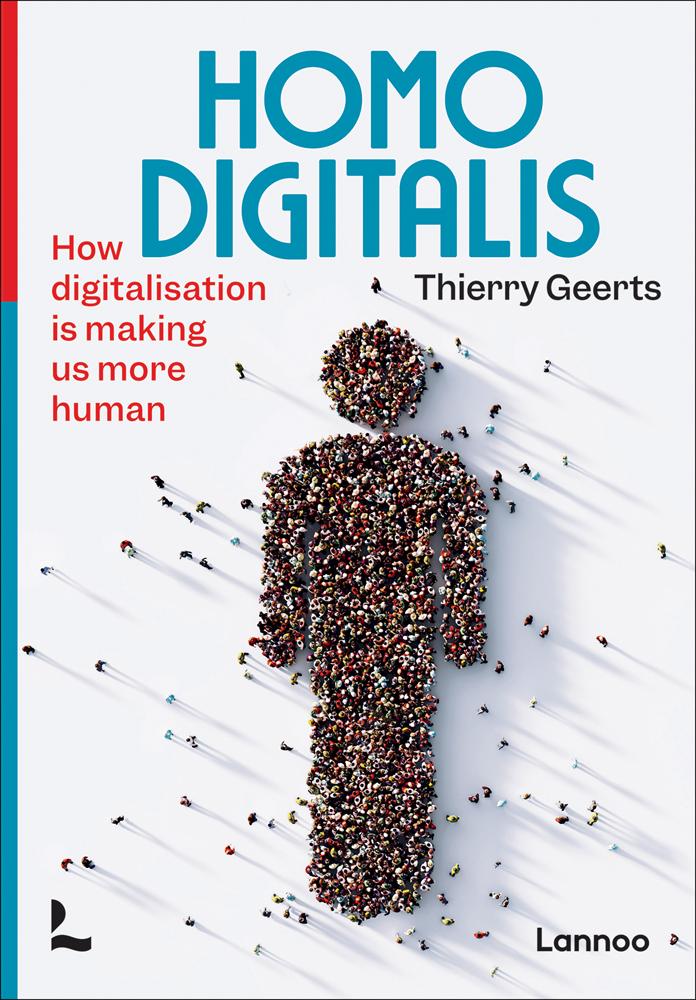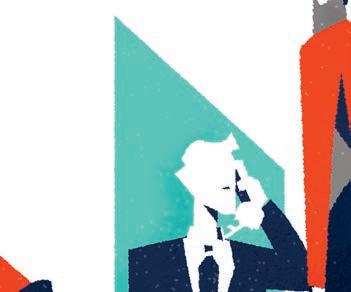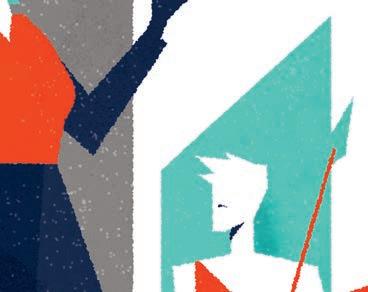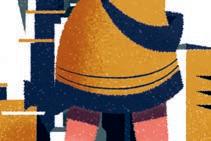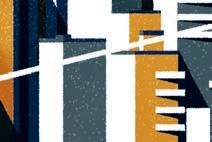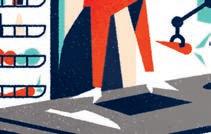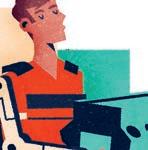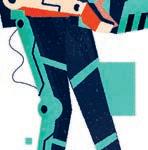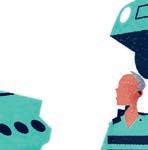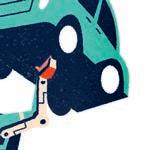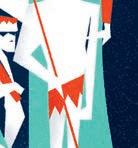1 Digitalis in the 2020s
Why digitalisation will lead to more welfare
What are you afraid of? Great heights? Spiders? Thunder and lightning? People are fearful of a great many things – and that’s perfectly normal. Similar to these fears, many people are also afraid of innovation. You might even lie awake at night thinking of the impact of technology on society, your job, or your relationships with other people.
It’s an age-old fear. The 1920s are remembered as being one big party, the era of the Charleston, world’s fairs, and beautiful cars, but it was also a time when people feared electricity, industrialisation, and wars. We’re now in the 2020s, and, though we no longer fear past innovations such as the locomotive, we’re now afraid of new phenomena like robots and artificial intelligence. We’re afraid of losing our
A century ago, we celebrated.
jobs to cyborgs, of the State becoming like Big Brother, and of losing our language and culture.
Fears like that can lead to populism, nationalism, and fascism – something that Hermann Göring knew all too well and exploited to help get the Nazis into power. According to the Nuremberg trials, he put it on record that it is actually relatively easy for a politician to get the support of the people by playing into their fears.
The fear of technology is fed by insecurity. We don’t know what the future might bring in this rapidly changing world. As Yoda from Star Wars taught us, fear is often the worst path to follow, but it’s an interesting compass. After all, the fact that
Fear can lead to populism.
we’re insecure and maybe even scared shows that we’re not indifferent to our fellow human beings and the society we live in. The fears we have reveal the things we find important: meaning, privacy, nature, democracy, culture, etc.
Technology in itself is actually neutral. It provides both opportunities and risks. It’s all about what we do with it, how we inform ourselves, how we rise above those fears and take matters into our own hands. That’s what makes the difference and is the reason why this book’s subtitle – ‘How digitalisation is making us more human’ – is an important statement. We’re in control of the impact technology will have.
The past few centuries have showed us time and again that technology has helped us make great strides once we overcome our fear of it. We now live longer, work less, and are healthier than ever before, thanks to the innovations that came into our lives over the past few decades. Yet, the aversion to new technologies remains persistent – a fear fed by being unavoidably confronted with negative elements of it on a daily basis, like when you are in a bar with your friends and someone takes out their smartphone instead of talking to you, or when rents rise in big cities because real estate moguls are buying homes en masse so they can rent them out as Airbnbs.
The past few centuries have showed us time and again that technology has helped us make great strides once we overcome our fear of it.
Ambient computing
The smartphone as an interface will also gradually disappear from our lives.
These days, over 1.5 billion smartphones are sold every year. Europeans spend about 2.5 hours a day on their smartphones; half of them even say that their smartphones have become absolutely indispensable to their lives. Nevertheless, like many other technologies, the smartphone as an interface will also gradually disappear from our lives.
We won’t forever be holding a device every time we want to search for information or look at something. Technology will increasingly be present all over the place but in a more practical and respectful way. The rollout of so-called ambient computing might turn out to be the most important revolution of the coming years: technology will be everywhere but will disappear behind the wallpaper. Smartphones will no longer take up so much time and space in our lives.
Today it’s already possible to wake up in the morning and talk to smart devices, like Google Home or Alexa, that serve as a central point of contact for all devices in your home. Who would have imagined that ten years ago? They help you get the lights to provide you with just enough brightness in the morning, or you can ask your fridge to recommend recipes based on what you’ve got in there. In the United States, sixty million people already own one of these smart speakers. But that’s only the first step of the revolution. Gradually, that device will also disappear as a central point of contact,
and all electronic devices, from refrigerators and cars to doorbells and thermostats, will become ‘smart’ and you will be able to talk to them.
These things you see around your house will also come to the cities. At present, we can already see the first steps being taken into the frictionless world that ambient computing can provide us. For instance, in a lot of European countries people can now enter a public parking garage without taking
Ambient computing will ensure that technology will be everywhere.
a ticket. The parking garage knows who you are through licence plate recognition and the parking gate opens up; when you leave, the payment is settled automatically through your banking app. How convenient is this?
Smart glasses can scan the world around us and understand what we’re seeing. They will allow you to walk into a Starbucks in China, see a tasty-looking cupcake, and order it without having to know a word of Chinese. Eventually glasses like these, much like our current phones, will also disappear and be replaced with an invisible lens of sorts.
Let’s not forget that a smartphone would have been considered a strange idea just twenty years ago.
That’s not as crazy as it might sound: in the research centres of the world, hundreds of engineers are working on developing the technologies that will make such applications possible. Let’s not forget that a smartphone would have been considered a strange idea just twenty years ago. Terms that often come up in such predictions are spatial computing, internet of things, 5G, edge computing, etc.
When reading the description above, you might have been thinking of Google Glass or the ‘smart’ refrigerator you saw in the electronics store – appliances that are mainly just expensive and clunky right now. We’re still in the phase where technological gadgets are ‘cool’ but fall short because they’re just not user-friendly enough. However, this will soon change, because ambient computing is getting better by the day.
Thanks to exoskeletons, we will be able to easily lift things that weigh over 200 pounds.
When smartphones disappear from our daily lives, peace and balance can also return. Even though technology will be present everywhere, it will be in the background and function in more of a supportive role, which will be beneficial to our (mental) health. I believe this will lead to harmony in the ‘battle’ between human beings and machines and that the latter will make the former better. We’ll reach a sort of augmented humanity: humans will be able to rise above themselves and become more human with the help of technology. Sometimes this will be physical, such as exoskeletons that allow workers or nurses to easily lift things that weigh a couple hundred pounds. Sometimes this
will be mental, with the internet functioning like an ‘extra brain’ or algorithms that can make our lives easier. Technology will take over less meaningful tasks so we can have more time for the things that really matter. However, this will largely depend on our own drive, passion, curiosity, and entrepreneurship. The opportunities are already there, but we’ll have to learn to control the risks.
Reinvent the world
Innovations such as smartphones, artificial intelligence, and ambient computing are more than just gadgets. Just like steam engines, electricity, and the computer, they are leading to a new Industrial Revolution. The impact of this fourth Industrial Revolution should not be underestimated. It will force us to reinvent everything with the help of these new technologies.
We might say we’re living in Denmark, Italy, or Germany, but this isn’t really the case anymore. Together with four billion other people connected with each other online, we’re living in a new ‘country’ which I christened ‘Digitalis’ in my previous book. That country is continuously evolving and goes far beyond the boundaries of the physical world. We can now watch series on American Netflix, post videos on Chinese TikTok, listen to music on Swedish Spotify, and buy products from all over the world with a single click.
We’re now nearly all inhabitants of that one country I call Digitalis. But there is more. People create technology which,
in turn, influences people. The changes on a technological, human, and social level have been so significant that people have evolved into what you could now call an entirely new species: the homo digitalis. The homo sapiens is no more. Long live the homo digitalis!
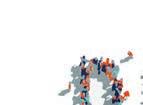
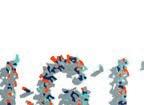
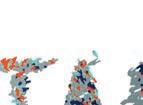

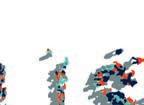


We might still look the same, but the way we live has completely changed. We now enrich our lives thanks to digital applications and explore the possibilities of Digitalis, with an instant connection to four billion people of the same species. This impacts our health, the way we learn, the relationships we enter into with other people, how we organise our lives, and so on. For the homo digitalis, a lot of boxes appear to have disappeared. There are new rules; we live differently, and everyone can become their own medium or brand. By now, there have been many books about these general changes, but not as many talk about what these changes are doing to us, something I am trying to map out in this book. At times I will have to be very brief when doing so, which is great, but it can also be a curse when writing a book: every chapter really ought to be a book in and of itself!
The homo sapiens is no more. Long live the homo digitalis!
This fourth Industrial Revolution is a digital revolution.
The homo digitalis is a multimillionaire
Of course, people aren’t standing still in Digitalis. Technology will always cause upheaval, sometimes driven by unforeseen circumstances. When the Covid crisis hit in 2020, the world discovered that many things could also be done digitally. Grandparents started using videoconferencing and online chat, and children joined their classes digitally. Digitalis was able to welcome a lot of new citizens. All of a sudden, working from home became the norm and people realised that even a visit to their doctor could be done via Zoom, Meet, or Teams and was even safer. Contactless
Homo sapiens has evolved into homo digitalis.
payments and e-commerce turned out to offer more secure solutions given the circumstances.
Digitalisation also accelerated in the workplace. The pandemic succeeded in ways that few managers have ever managed to do: digitalising organisations at record speeds.
Digitalisation can have far-reaching consequences for homo digitalis and our world. The best illustration of this is what happened ten years ago with the encyclopedia.
For centuries, the Encyclopedia Britannica was an institution. The 2010 edition counted over 32,000 pages and cost over $1,000. The thing that was so special about this edition
